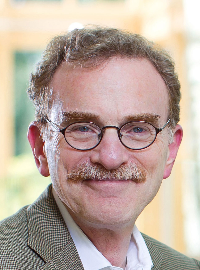Hageman Distinguished Lecturer in Agricultural Biochemistry and Provost Lecturer on Excellence in Scholarship

Dr. Randy SchekmanNobel Laureate in Physiology or Medicine, 2013 May 11, 2015
Public Lecture: "How Cells Export Proteins" Research Colloquium: "Secretion of Large Protein Complexes and miRNA" |
About the Speaker
From Long Beach to Stockholm is quite a trek. Randy Schekman began that journey at twelve years of age, in the post-Sputnik era, by entering science fairs and winning awards. Fascinated with micro-organisms, he worked to save up $100 to buy a used Bausch and Lomb microscope, his first “real” microscope, while in high school. When a college student in Chemistry at UCLA, he took a year abroad, in the lab of H.F.R. Hayes, the eminent microbial geneticist, at Edinburgh, U.K. Upon his return, he spent ever more time in the lab, investigating DNA replication. That topic naturally led him to Arthur Kornberg’s lab at Stanford.
As a new faculty member at Berkeley, Randy Schekman started on a new bold venture, probing the secrets of secretion. Trained in both enzymology with Arthur Kornberg, and membrane biochemistry as a post-doc with S.J. Singer, his work was inspired by the very elegant descriptive morphological studies done by George E. Palade (Nobel prize 1975), who combined electron microscopy and isotopes to map out a pathway from ribosomes, through the ER and Golgi body, to the cell surface.
When classical, reductionist approaches for studying steps and proteins in this pathway proved recalcitrant, Schekman and graduate student Peter Novick used genetic screens in Saccharomyces cerevisiae (baker’s yeast), a model unicellular organism. They soon identified close to two dozen temperature sensitive mutant genes that were essential for the secretion of extracellular enzymes. Schekman’s work culminated in a Nobel prize in 2013, which he shared with James Rothman who studied animal cells, and with Thomas Sudhof who had focused on brain neurotransmitters.
Most of the proteins identified by the first yeast secretion pathway mutant screen turn out to have some close homologs in all eukaryotes. About two dozen more mutant proteins have been characterized in the yeast pathway, while further complex interactions are found in other systems. Human diseases of secretory trafficking are well known. Plant cell growth is related to vesicular fusions that build up the vacuole, driven by homologs of the SNAP and SNARE proteins. The deposition of the seed storage proteins on which all our lives depend is mediated by protein homologs via similar transfer pathways.
Professor Schekman has been a member of the National Academy of Sciences since 1992 and served as the editor of the N.A.S. “Proceedings” beginning in 2006. In 2011, he was designated Editor-in-Chief of a new journal eLife, which is co-sponsored by HHMI, the Max Planck Institutes and the Wellcome Trust. He is a strong advocate for high quality reviewing, and open access publishing; eLife is committed to that goal. He has served as an editor of several other journals.
Randy Schekman has been at Berkeley since 1976, as part of what is now the Division of Biochemistry and Molecular Biology, in the Department of Molecular and Cell Biology. He has been a Howard Hughes Medical Institute Investigator since 1991. Professor Schekman is recipient of several additional awards including the Eli Lilly Research Award in Microbiology and Immunology (1987), Gairdner Foundation International Award (1996), Lasker Award in Basic Biomedical Research ( 2002), Louisa Gross Horwitz Prize (2002), and the Massry Prize in 2010. He is a co-author of a couple hundred peer-reviewed publications plus many commentaries, reviews and edited volumes. He has mentored many graduate students, postdoctoral researchers and also undergraduates, during almost four decades at Berkeley.